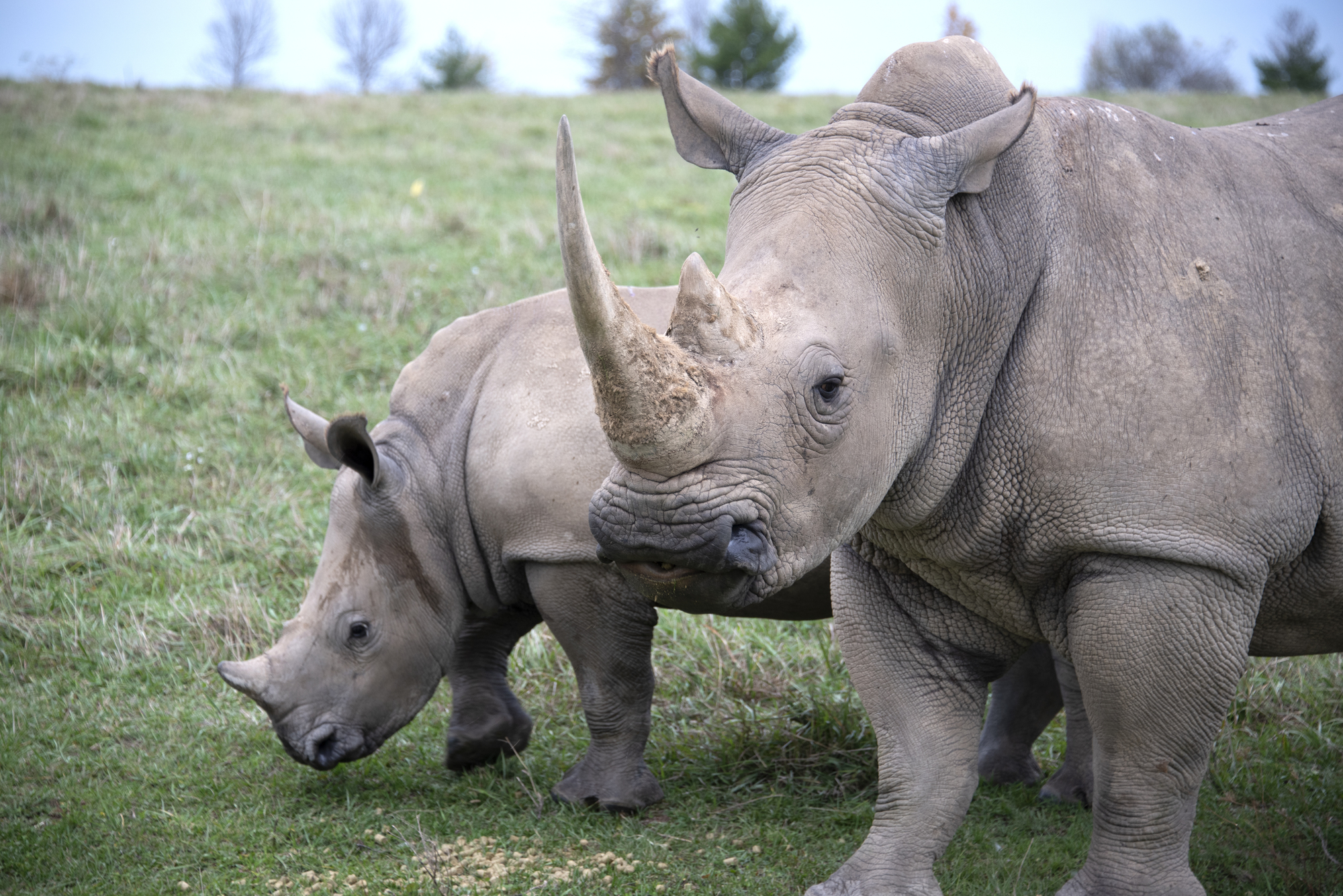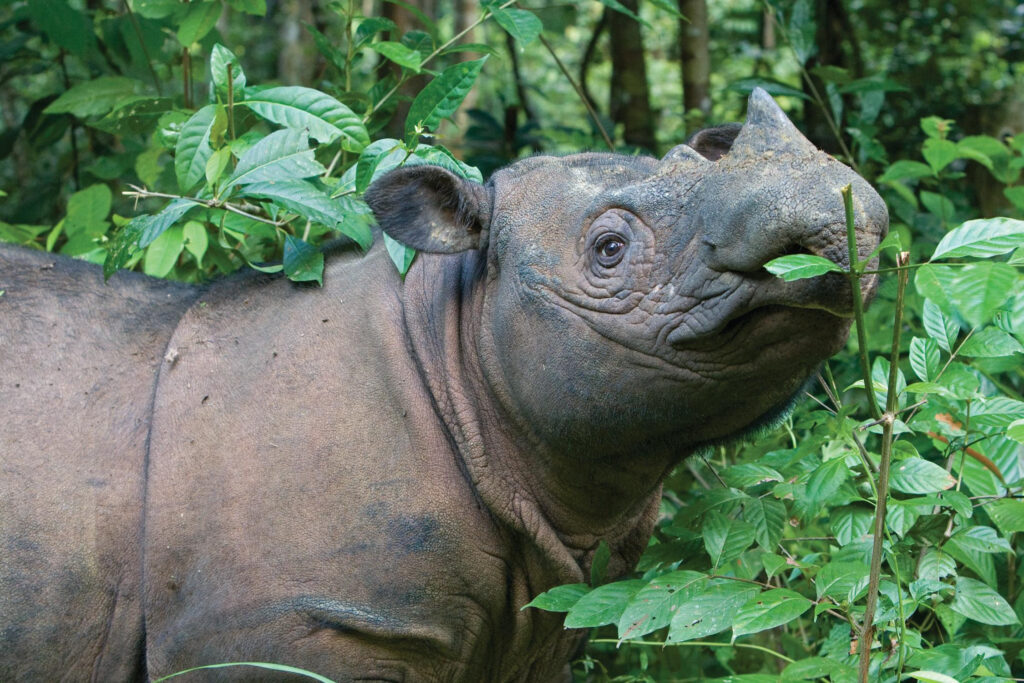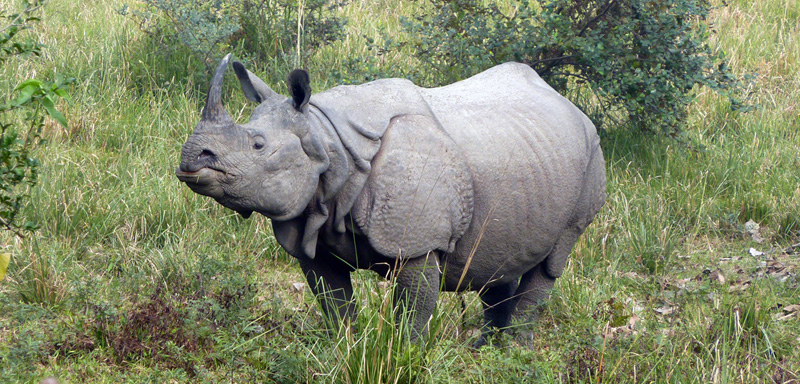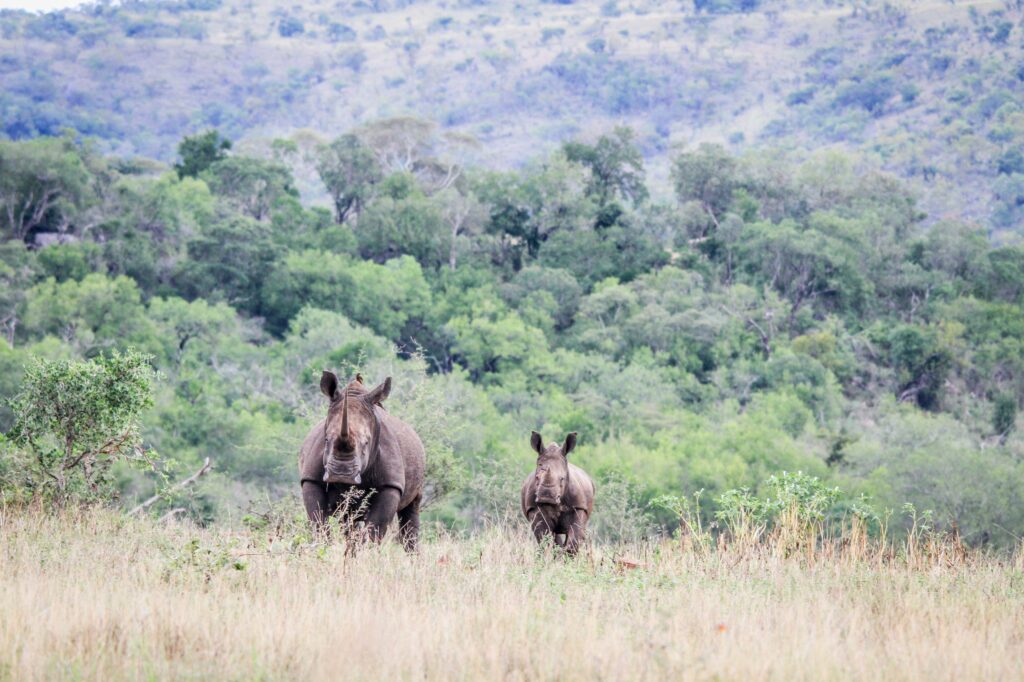Collaboration and COVID

By Nina Fascione, executive director of the International Rhino Foundation
On September 23rd, at a brutal 3 am Eastern Time for me, I had the pleasure of presenting a virtual panel discussion with Jon Taylor of Save the Rhino International (SRI), the International Rhino Foundation’s (IRF) “sister organization” in London, at the European Association of Zoos and Aquaria annual meeting. Jon and I wanted to inform the dedicated animal husbandry professionals who are part of the Rhino Taxon Advisory Group what rhino conservation has been like in the field under the COVID-19 pandemic.
Jon and I talked to the audience about how collaborations have been more important than ever during the pandemic. Partnerships that have long been a means of conducting conservation activities have needed to expand and grow, including local communities, conservationists working in the field, researchers, NGOs, government agencies, the private sector and our always important zoo partners, who work to educate the public about rhinos and maintain critical ex situ (in captivity) conservation programs.
Similarly, we discussed how fundraising has needed to diversify, since many of the usual methods of attracting and engaging donors, such as events and wildlife-focused trips, have been off the table and some funders, such as zoos, have suffered their own economic losses during the pandemic. To compensate, we have worked hard to keep the public informed through webinars and other virtual means, and sought support from a wide range of funders, including foundations, individual donors and businesses.
Jon and I then invited three key allies from rhino range countries to join us and tell the audience first-hand about life in the field. We asked each of them what the biggest challenge was under COVID-19, and then a lesson learned or something hopeful for moving forward.

Inov Sectionov, IRF’s Indonesia Program Manager, joined the session from Way Kambas National Park in Sumatra, where the Sumatran Rhino Sanctuary and seven very important rhinos live. Inov said the pandemic has hindered work on the ground, but thankfully the Rhino Protection Units who guard the rare Sumatran and Javan rhinos have been able to function as usual (albeit wearing masks). One of Inov’s main lessons learned was that the pandemic has taught us all how to adapt. For example, trainings that would have formerly been in person had to go virtual and we have all become more adept with technology.

Dr. Bihab Talukdar, IRF’s Senior Advisor for Asian Rhinos, joined from Assam, India to talk about challenges faced by those protecting and conserving greater one-horned rhinos. Much rhino conservation work has been slowed during the pandemic, but India Rhino Vision 2020 (IRV2020), which started in 2005 for the purpose of restoring rhinos in Assam, came to a close earlier this year with its final operation, the translocation of two rhinos from Pobitora Wildlife Sanctuary to Manas National Park, bringing the total there to 47. Bibhab said that conservationists thought beyond the rhinos themselves, and worked with local villagers to ensure they had masks and other necessary pandemic supplies. Bibhab finished by saying, only somewhat jokingly, that one main lesson learned in the pandemic is that we all need to keep ourselves fit to stay as healthy and protected against disease as possible.
Eduard Goosen from KwaZulu-Natal in South Africa spoke about impacts of the pandemic in Africa. Eduard shared that one small benefit for the folks involved with wildlife and park protection in Africa was that after tourism stopped and the parks all closed down, those working there and their families had the parks all to themselves – what a dream! But on a much more serious and frightening note, the economic impact of the pandemic has created a serious situation for communities. People are going hungry, and often turn to poaching wildlife to feed their families, making the job of wildlife protection that much more challenging. As for a lesson learned, Eduard believes that we have all learned critical thinking as we have navigated this perilous new world.

Jon and I are very grateful to our colleagues from around the world for joining us for this presentation and, more importantly, for the critical conservation work they do each and every day.
To demonstrate that we “practice what we preach” in regards to collaboration, Jon and I shared how our two organizations, the largest rhino-focused organizations in the world, partner to maximize our efforts on behalf of these imperiled species.
The SRI/IRF partnership is, we think, fairly unique in how deliberately collaborative it is to maximize both effectiveness of our conservation programs as well as directing funding to the field for rhino conservation. The two groups “divide and conquer” in some geographic areas, with SRI focusing more in East Africa and IRF focusing more in southern Africa, and combine efforts in other areas to maximize impact. SRI assists in vital fundraising for IRF’s work on the ground in Asia, as they don’t maintain their own programs in that region – a truly generous and unique practice. And we are working on joint position statements when feasible to strengthen our messaging about thorny topics in rhino conservation.
So this is, I think, a rather uniquely positive relationship between two organizations focused on the same mission, and it was a privilege to work with Jon and our field colleagues at the Taxon Advisory Group meeting.
Big thanks to the EAZA Taxon Advisory Group for inviting us and sharing our commitment to collaboration!
